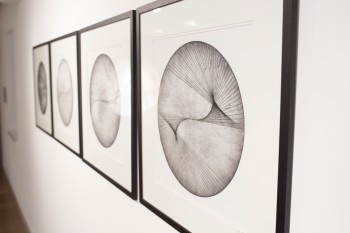The traverse board is a navigational device that was used by European and Scandinavian mariners from the late 15th century until the mid-19th century and was a vital tool in the Age of Exploration.
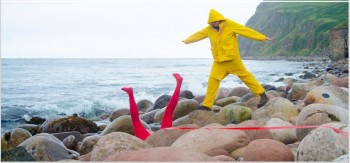
As a keen sailor and practising artist, the traverse boards are some of my favourite objects within the museum`s collection. Weathered and worn, they have a tactile quality that intrigues me and became a source of inspiration in my artwork.
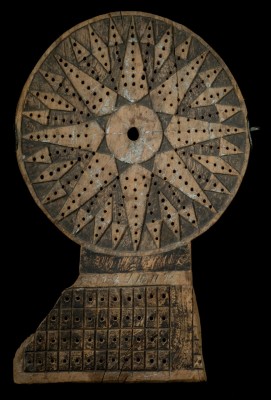
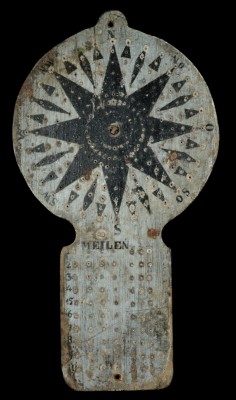
Back in the days of sail, long before the advent of electronic charts and GPS (Global Positioning System), mariners relied on various navigational tools to help plot their course and guide them on their voyages.
One of the oldest methods in navigation, is called dead reckoning and was used by seafarers for many years to determine longitude at sea.
To do this, the sailors regularly measured the speed and direction of the ship. Direction was established with a ships compass. For speed, sailors used a chip log: a tool made up of a triangular wooden board (chip) attached to a log line, which was knotted at regular intervals, and coiled round a reel.
A sailor would throw the chip off a ship`s stern and as the ship moved forward the line came off the reel. Sailors would count how many knots went overboard in a set amount of time and this enabled the ships speed to be calculated.
Starting from their last-known location, the navigator used this information to plot their current position in the ocean.

So where does the traverse board come in to all this?
The traverse board was developed as an easy way to record the ship`s movements over a 4-hour period known onboard as a watch.
Constructed of wood, the traverse board was divided into two parts. Attached to each with string were pegs which were used as markers.
The top was for recording the direction sailed. It featured a 32-point compass, from its centre, a line of 8 holes radiated out to each point. The lower section was for recording speed and had rows of holes which represented the ship`s speed in knots.
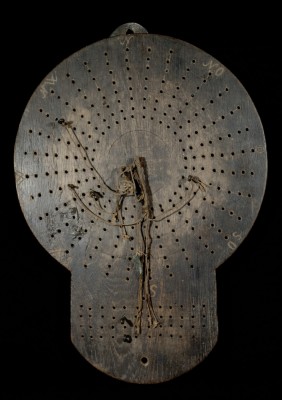
How does it work?
Each half-hour during the watch, a crew member would insert a peg in the top to show their compass bearing, marking direction travelled and on the hour placed another peg into lower section, indicating speed sailed.
At the end of the watch the navigator collected and transferred this information into the ship`s log and plotted it on a chart. Then the pegs were pulled out of the board, ready for the next watch and the process started all over again.
Over longer voyages, the system of dead reckoning could be hugely inaccurate as it did not consider factors such as the wind and ocean currents, leaving ships vastly off course or completely lost at sea.
All I can say is, thank goodness for today`s GPS!
However, the museum`s traverse boards gave me a positive direction in my art practice and lead me to create several collagraph`s depicting abstract portraits of my family.
